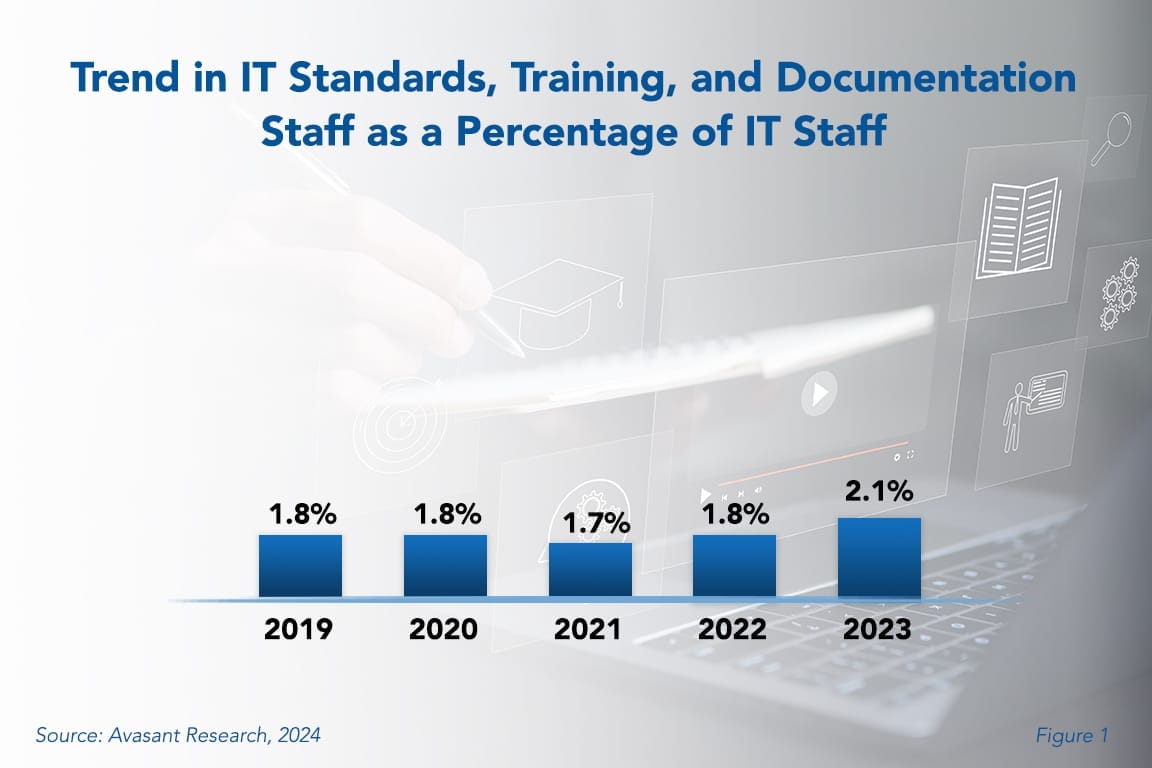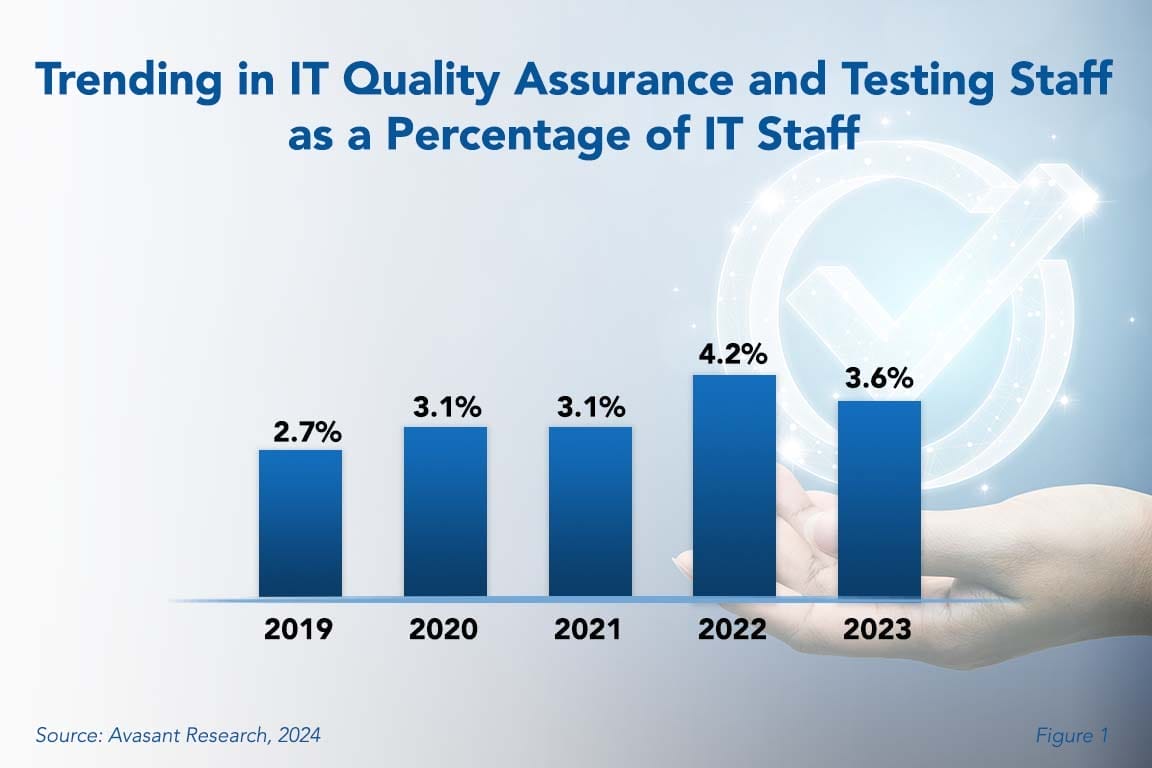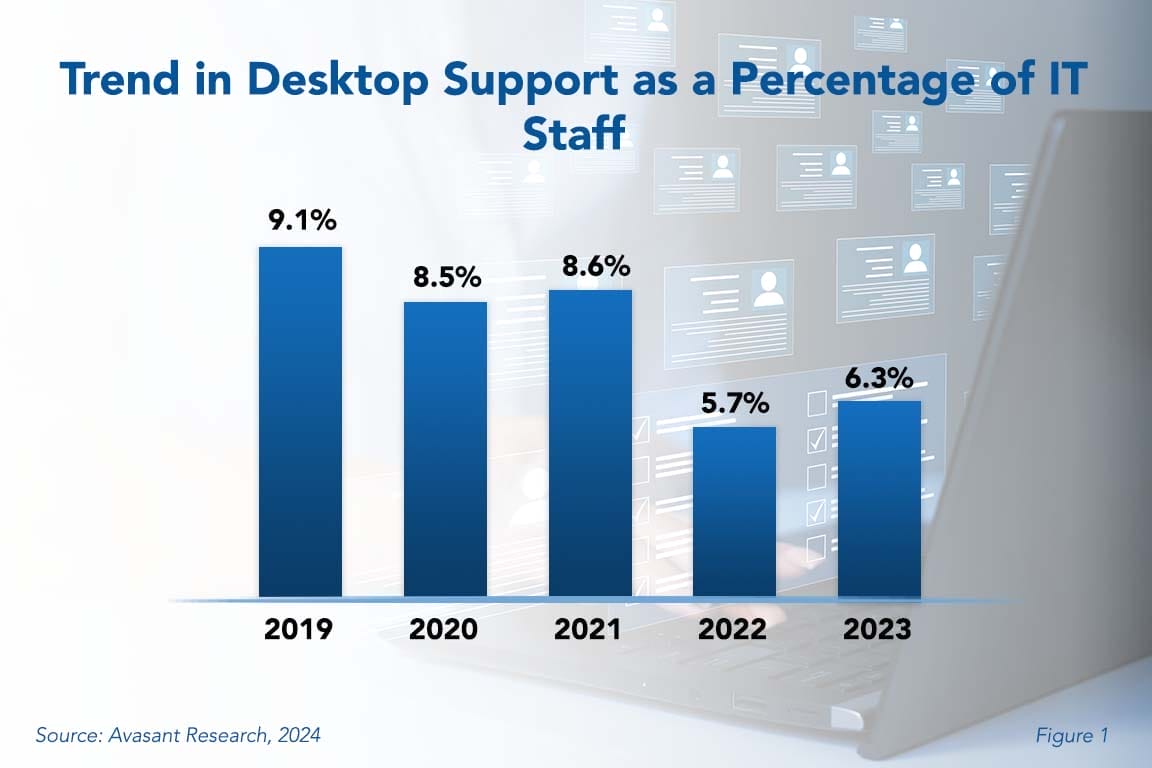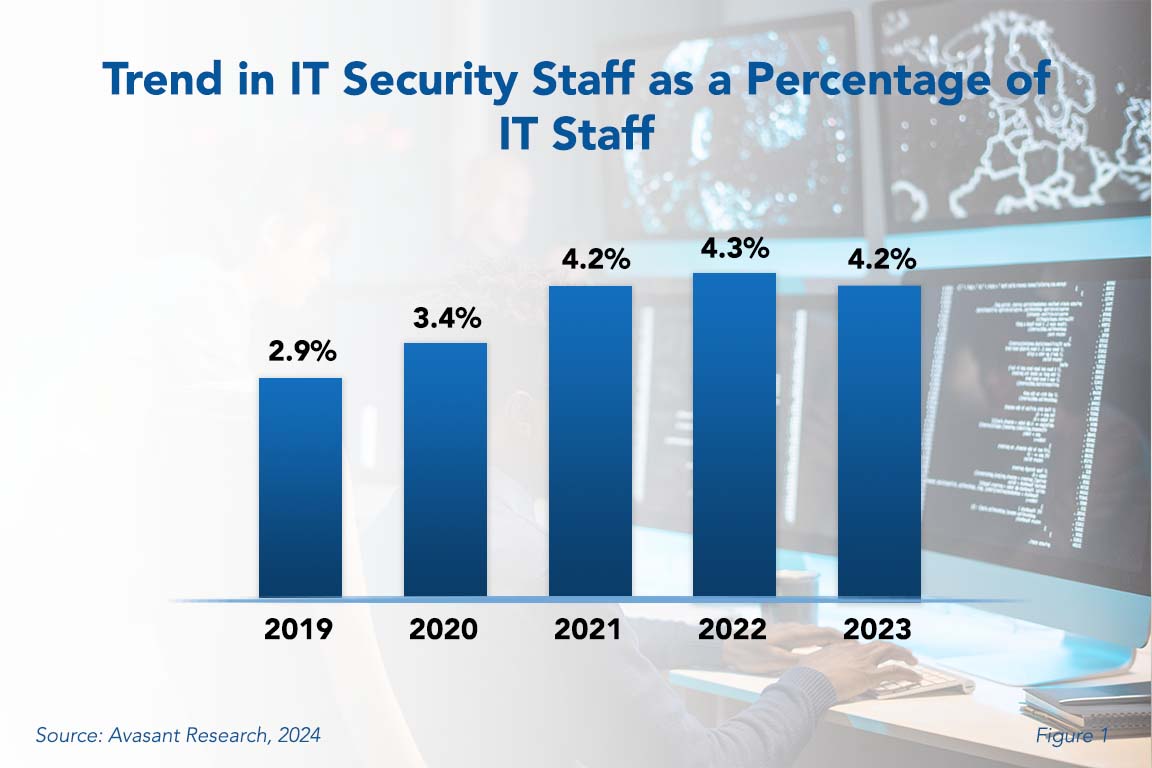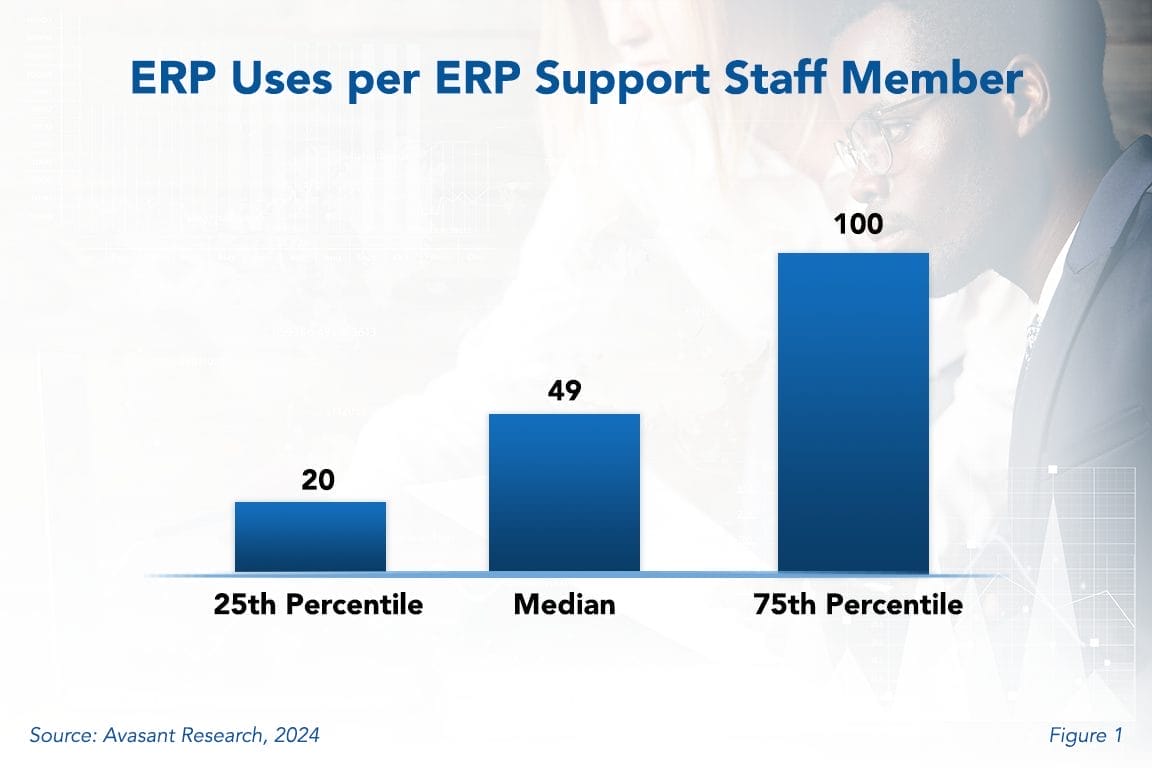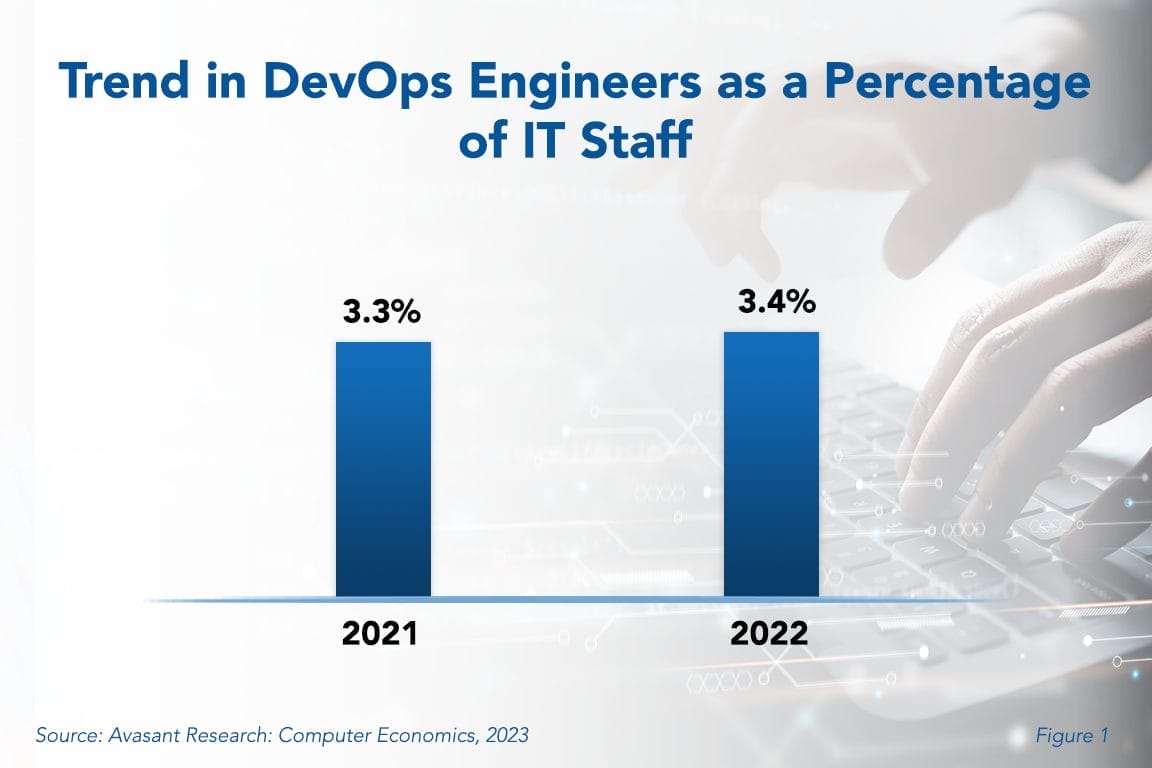Latest Reports
-

IT Security Staffing Ratios 2025
Cybersecurity threats are constantly evolving, and it is tempting to throw more bodies and more money at the problem. With the threat of significant financial loss, business disruptions, and damaged reputations, organizations of all sizes face increasing pressure to bolster their security posture. Enterprises have steadily increased their IT security budgets and head count for years. However, many struggle to effectively recruit, retain, and develop the skilled security professionals needed to address these growing threats.
February, 2025
-

Role of Application Developers is Changing Rapidly
In just five years, application developers as a percentage of IT staff have gone from making up nearly a quarter of the entire IT staff (23.1%) to only 14.2%. This significant drop is not necessarily a sign of mass layoffs of application developers. In fact, we have seen no evidence that fewer application developers are working in IT departments. However, it does signal a change in the overall makeup of IT departments and the changing role of the application developer. This research byte summarizes our full report, Application Developer Staffing Ratios.
-

Application Developer Staffing Ratios 2024
In just five years, application developers as a percentage of IT staff have gone from making up nearly a quarter of the entire IT staff (23.1%) to only 14.2%. This significant drop is not necessarily a sign of mass layoffs of application developers. In fact, we have seen no evidence that there are fewer application developers working in IT departments. However, it does signal a change in the overall makeup of IT departments and the changing role of the application developer.
September, 2024
-

IT Project Management Staffing Ratios 2024
Most enterprises require constant and rapid change. In IT organizations, the role of the IT project manager is critical. New technology adoption, regulatory compliance, outsourcing, remote/hybrid work, and the ever-present mandate to do more with less make it crucial that projects be adequately planned and controlled. Because of this constant need for change, rightsizing the project management staff is an ongoing priority for IT leaders.
June, 2024
-

IT Standards, Training, and Documentation Staffing Ratios 2024
Some organizations tend to underestimate the importance of the IT standards, training, and documentation job function since its impact on the bottom line may not be clear. However, these job functions are essential for ensuring the smooth operation, compliance, and effectiveness of IT systems — all crucial elements for the overall success of any business.
April, 2024
-

IT Staffing Ratios: Benchmarking Metrics and Analysis for 17 Key IT Job Functions
The analysis of IT staffing data has been a core competency of Computer Economics since we began publishing our annual IT Spending and Staffing Benchmarks study in 1990. Each year, we survey more than 200 IT organizations across 10 major industry sectors, based on our sampling model, to obtain data on IT staffing levels, server counts, network infrastructure, outsourcing, and spending, among other information pertinent to the assessment of IT staffing.
September, 2024
-

IT Quality Assurance and Testing Staffing Ratios 2024
IT quality assurance and testing has always been a vital role in IT organizations. However, the role of quality assurance as a discrete job position has changed significantly. In 2023, the percentage of quality assurance and testing staff as a percentage of the total IT staff dropped to 3.6% from 4.2% in 2022.
February, 2024
-

Desktop Support Staffing Ratios 2024
The desktop support function has gone through significant disruption in recent years. The COVID-19 lockdowns and the sudden shift to remote work, combined with the recent return to the office has seismically shifted the location and value of the desktop. Digital workplace technologies and the need to secure employee-owned equipment has put a strain on this function. At the same time, however, automation and other influences have made desktop support more efficient. It is always hard to right-size any IT staff function, but desktop support may be harder than normal at this time.
February, 2024
-

IT Security Staffing Ratios 2024
The constant beating drum of new security vectors and the recent impact of remote and hybrid work have placed pressure on IT security staffing levels. Enterprises have been steadily increasing IT security budgets and personnel for years. However, IT security personnel as a percentage of the total IT staff has decreased slightly from 4.3% in 2022 to 4.2% in 2023. For three years, security personnel as a percentage has been flat, ranging between 4.2% and 4.3%. Has the supply of IT security personnel finally reached its cap?
February, 2024
-

ERP Support Staffing Ratios 2024
Rightsizing the support staff for an ERP system can be difficult. This is because many factors affect the support staffing ratio. These include the type of ERP system, its age, the extent of modification, and the industry sector. Nevertheless, understanding support requirements for ERP systems is vital for IT leaders. This research byte summarizes our full report on ERP support staffing ratios.
January, 2024
-

Best Practices for Benchmarking Your IT Budget Ratios
Benchmarking is a popular way for IT executives to justify their IT budgets and better focus their efforts to achieve a state of continuous improvement. Whether it is to compare their IT spending levels with industry peers, defend current spending levels, justify new spending requests, or identify opportunities for cost improvement, benchmarking is the best way to objectively measure an organization’s IT budget against industry standards.
December, 2023
-

DevOps Engineer Staffing Ratios 2023
DevOps promises to optimize application development and maintenance processes, improving software quality and reducing development time and cost. As a result, IT organizations will be better able to meet the rapidly evolving needs of a business and achieve other strategic goals. Although DevOps engineers today represent a small portion of the total IT staff at most businesses, we anticipate that companies, especially those that develop much of their own software, will continue to expand their DevOps engineering staff.
September, 2023











